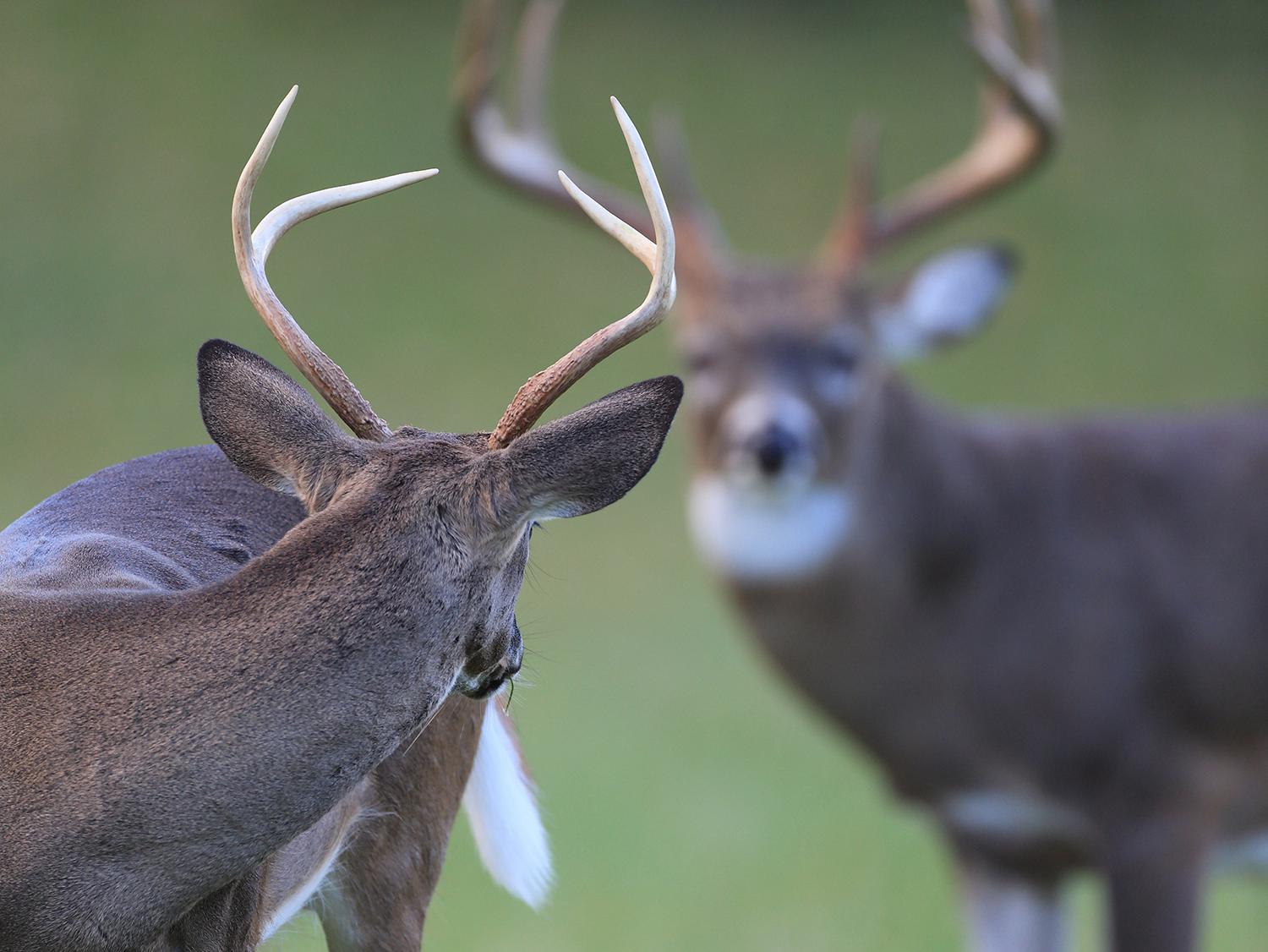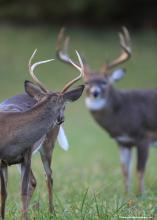Information Possibly Outdated
The information presented on this page was originally released on July 27, 2018. It may not be outdated, but please search our site for more current information. If you plan to quote or reference this information in a publication, please check with the Extension specialist or author before proceeding.
Antlers offer insights into habitat quality
STARKVILLE, Miss. -- This fall, hunters will grab their bows, muzzleloaders and rifles to hunt North America’s most pursued big game animal -- the white-tailed deer.
While some hunters’ goal is delicious venison, other hunters relish the opportunity to harvest a mature buck with a large set of antlers. Antlers are some of Mother Nature’s best artwork, and humans have always appreciated this ornate configuration of bone.
Antlers are critical for breeding opportunities. For bucks, antlers are a signal, a weapon and an ornament.
First, antlers are a signal to advertise a buck’s age and condition. A buck with large antlers is older, which lets younger bucks know he is a force to be reckoned with in a fight. The visual display that antlers provide essentially saves the younger buck from a needless fight he would most likely lose.
When two bucks of similar age and size meet, antlers become weapons. Antlers are the tool bucks use to lock up and determine who is stronger and has more stamina. The actual size of the antlers is not important, as long as the buck has sufficient antler size to match his opponent.
The strength of the antlers is more important than the number of points. Big antlers that easily break or extremely large antlers on a puny body will not help the buck in establishing himself in the dominance hierarchy. It’s probably why half of all mature bucks in Mississippi have eight points -- that’s really all they need.
The third purpose of antlers appears to be as an ornament to attract females. Research from the Mississippi State University Deer Lab shows that, when given a choice, does prefer bucks with relatively larger antlers. This is a new finding in wildlife science. Biologists believe the doe is attracted to larger antlers because they signal genetic quality, and she wants to breed with the highest quality buck.
Our research has demonstrated that deer populations are not limited by genetics that code for large antlers. Within a population, there is always the potential for larger antlers, if the environment allows those genes to be expressed. The relationship between a population’s average antler size and the habitat’s ability to produce high-quality food is very important for deer biologists and managers.
Antlers are great habitat-quality signals because they are more sensitive to changes in nutrition than body size is. This means that, from year to year or place to place, the average antler size can easily swing up or down by 10 percent; this rarely happens with body size. Biologists believe this is because body size is vital for survival, whereas antler size may be vital only for reproduction. The priority is to live, and then reproduce.
Deer hunters enlisted in the Mississippi Department of Wildlife, Fisheries and Parks’ Deer Management Assistance Program are required to collect data from harvested deer each year. Among these measurements are body size, antler size and age. When biologists see a downward trend in age-related antler size, they know something is wrong. This is often a result of food limitation, and the prescription is either to add more food or reduce the number of deer.
Native Americans used every part of a deer. The meat was food, the hide provided clothing, and the antlers became tools. Similarly, wildlife biologists use antlers as tools for gauging the conditions of deer herds.

Editor’s Note: Extension Outdoors is a column authored by several different experts in the Mississippi State University Extension Service.







